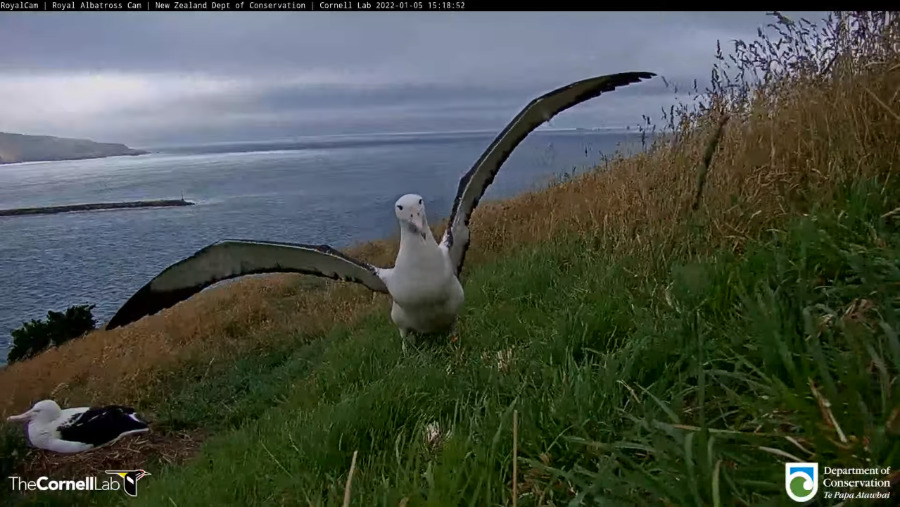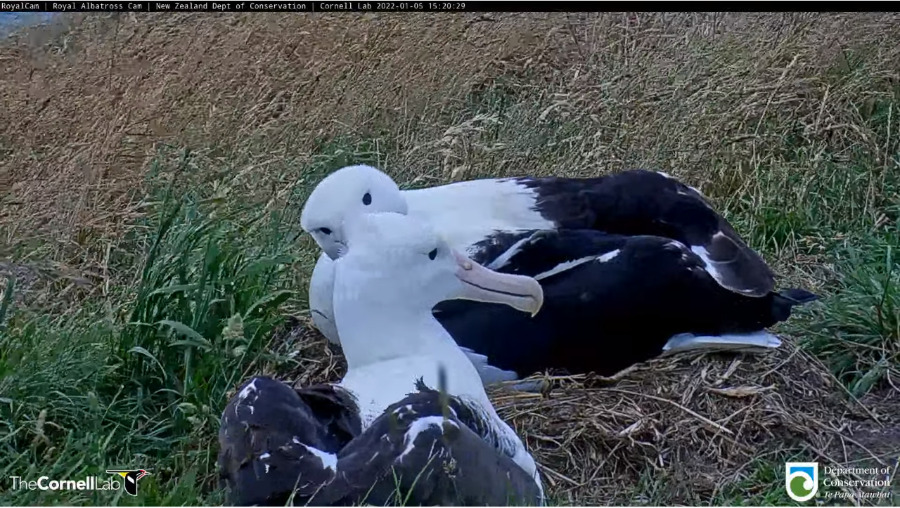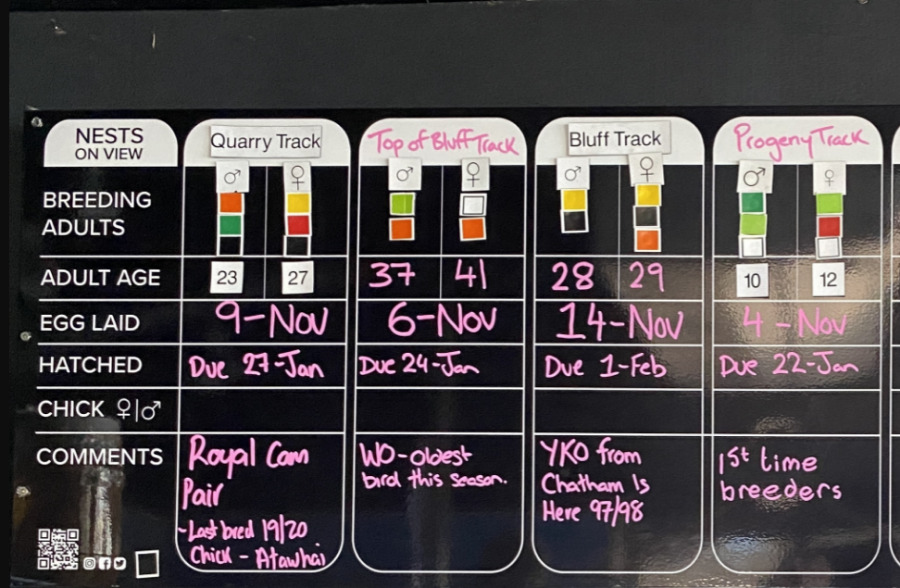Īstā ola tiek aiznesta.

10.41
OGK turpina "perēt".

Sharyn Broni (Ranger, DOC) ModSharyn Broni (Ranger, DOC) Mod
At around 10.25 OGK was hydrated with 600ml water with vitrate (a non-antibiotic supportive treatment for dehydration). Theo held and Chris McCormack from the Royal Albatross Centre gave the fluids via a tube. As you can seen this is a 2 person task. OGK struggles as he is a wild bird. But he gets back on the dummy egg after a shake on release because he is loyal to his mate and nest.
This is day 15 for OGK on the nest. He is still incubating the dummy egg that he received on day 13. The natal egg is in the incubator along with 2 others who have long changeover times at their nests.
The weather has been warm and New Zealand is experiencing a marine heatwave currently. We also have several other nests approaching the 13 day mark for changeover time. Foraging changes for some of the breeding birds may be tough if food stocks are not where they expect.







(GT)Sharyn Broni (Ranger, DOC) Mod
Kia ora koutou (hello everyone)
The 3 closest nests are about 50 - 60m from this nest at Quarry in different directions. One is to the front, one down the hill to the left and one up the hill to the right. Two more are about 70 - 80m to the north of here. Later on if these nests have chicks we may see these chicks wandering about looking for flight practice in the wind.
The feathers surrounding the brood patch come under the egg so it is not sitting on the nest. The webbed feet are often used for young chicks to sit on but sometimes they do this with the egg also.
Once the gulls, quieten down we will hear more noise from the albatross.
The hormones that make the beak pink typically kick in when a chick begs. For some albatross the chick calling while it is still in the shell is enough to turn the beak pink. Heat will make the beak pinker than normal also so a nesting bird typically has a pinker bill than the non-breeders.
OGK and YRK are an experienced pair so I would think that they have a good instinct as to when the egg will hatch. Pairs left on dummy eggs will tend to desert at day 90 because there is no sign of hatching. At an average hatch date of 79, 90 days is outside the normal range. I expect if OGK is back before the hatch then YRK would not be away very long. in fact, OGK should be back around the time we start visual checks.
The expected hatch date for Quarry Track egg is the 27th January. Visual checks of the egg will start on the 21st January. We may also listen for sound from inside the shell such as the chick calling and the movement of the chick against the membrane prior to the bill making its way into the aircell.
Although there is an expected date for hatching there is also a range. More than half of the eggs will hatch within 1 or 2 days of the average and some will hatch 3 - 4 days from the average. In extreme circumstances there may be a 5 day difference.
Our first visual checks of the first egg laid start on the 14th January and this egg is due on the 20th January. We will be very much in the full swing of hatching by the time the Royalcam nest has a chick.
Sadly we have some egg loss recently. We can now expect at most 29 chicks. All these eggs are doing fine at this stage. It happens from time to time that an embryo dies for unknown reasons.


